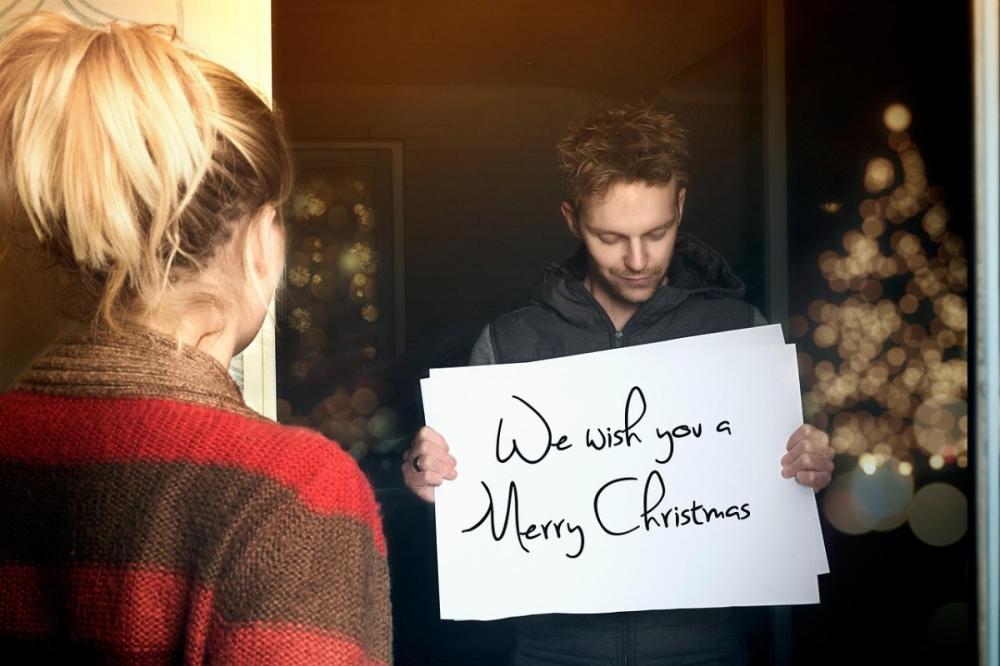search
date/time
 | Cumbria Times A Voice of the Free Press |

James Goodall
Features Writer
12:00 AM 30th August 2025
arts
Hallmark Movies And How To Appreciate Them

The Hallmark movie is the eighth wonder of the world. And yes, it is the same company that makes the Christmas cards. It’s a strictly made-for-TV movie (you won’t see one in the cinema) – and genre-wise, it will typically be a drama, a mystery, or a romantic comedy. It’s not to be confused with its peer, the Lifetime TV movie, of course, although the two are virtually identical in terms of content, execution, and style. Hallmark is far and away the mightier sausage factory, though, churning out approximately 14,000 features annually. Okay, I jest, but the actual figure’s not that far off*. Their offerings are infinitely more saccharine as well – particularly their Christmas outings, but more on those later.
The action invariably begins in the present, with the protagonist compromised in some way – bound to a kitchen chair, maybe, albeit with perfect hair and makeup, while the villain of the piece takes a quick bathroom break. Fade to black, and we’re transported back in time by six weeks to a happier place.
Never do you get someone who bears a striking resemblance to Gregg Wallace, but that’s probably for the best
The love interest is conventionally tall, dark, and handsome, strong-jawed, and clean-shaven. Never do you get someone who bears a striking resemblance to Gregg Wallace, but that’s probably for the best.
In fact, everyone is a ten – bar none – with freshly coiffured hair, perfect skin, and perfect teeth. Not a single zit or misaligned gnasher to speak of, and not a fleck of dandruff in sight. And all parties are immaculately turned out: no one is ever flopped on the sofa in a baggy T-shirt and boxers, covered in ketchup and cake crumbs. The houses are just as flawless: all pearly white, pristine, and sparklingly clean. There’s never a pile of unwashed crockery in the sink, a bulging laundry basket, or a rubbish bin ready to burst.
This type typically wears a low-cut top, tight jeans, and heavy red lipstick – so there can be no doubt in your mind she’s a malevolent siren destined to lure the protagonist’s husband onto the rocks.
Alternatively, we’re introduced to the protagonist’s therapist – a cynic at first. “There, there,” she says. “Nothing’s the matter; try and relax.” But as things begin to fracture in the protagonist’s life, she becomes suspicious and realises the situation isn’t a figment of her client’s imagination after all – at which point she crosses every professional boundary in the book to help bring the antagonist to justice.
Said antagonist is traditionally male, wears black, scowls at his phone a lot, and ends calls abruptly without so much as a “Thank you, goodbye”. This way, you know for sure he’s a wrong un! He also has a habit of taking out his aggression on inanimate objects. Internal doors, walls, and furniture items tend to have a rough time of it.
Occasionally, though, it’s a female antagonist. This type typically wears a low-cut top, tight jeans, and heavy red lipstick – so there can be no doubt in your mind she’s a malevolent siren destined to lure the protagonist’s husband onto the rocks. She’s also pretty nifty when it comes to arts and crafts: an avid Blue Peter fan, we catch a glimpse of a charming collage she’s assembled of the happy couple next door – with the wife’s face hacked out and substituted for her own, of course. In short, she’s a caricature, prone to random fits of hysterical rage. She hides behind hedges, huffing and puffing like a bull whenever the protagonist walks by, and when the husband spurns her advances, she rips his photograph to shreds.

Next, the plot is established. Maybe the protagonist is filing for divorce, but the controlling husband isn’t happy about it, gives the compost bin a good kicking, then takes up stalking as a new pastime. Alternatively, a couple are going through a rough patch; the husband decides to have a fling with his daughter’s grade school teacher, and before he’s had time to change his pants, Miss Jones is going full-on Fatal Attraction.
Plot developments are driven principally via SMS. It doesn’t matter if the characters are one or one hundred years old; everyone has an iPhone. Villains break into their victims’ houses with minimal difficulty, because nobody in these movies ever considers it prudent to set an alarm. What’s more, they pick the locks in broad daylight, dressed head-to-toe in black, thereby looking about as inconspicuous as a completely conspicuous thing in a tree.
Indeed, the end result is toe-curling melodrama. A convincing villainess will suddenly go all-out panto, shrieking “If I can’t have you, no one can”, whilst brandishing a garden rake.
For instance, when you’ve arrived home after a heavy day at the office, tuning into a Hallmark movie is the filmic equivalent of slipping into a nice, warm bubble bath.
The family are friendly, welcoming, and, above all, uber-polite. No one ever says, “Hello, stranger, where have you been all these years?” No, because one of the rules, or hallmarks of these movies is that characters have to be sugar-sweet and above board at all times. No one ever belches, breaks wind, or takes the Lord’s name in vain.
The village itself is hyperreal. Stepford Wives has nothing on it. Because it’s Christmas, the neighbourhood resembles a Hallmark card. It’s as if Santa’s workshop has spilt into suburbia, with chestnuts roasting on open fires, illuminations, and tinsel at every turn. And of course, snow. Lots of it. Every lawn, rooftop, and tree branch is caked in it – even when the sun’s out and blazing at thirty degrees. (The majority of Hallmark movies are filmed during summer, believe it or not.)

All images from Pixabay
I must sound cynical, but I do have a positive point to make about these movies: they’re reliable, safe, and, at times, oddly comforting. For instance, when you’ve arrived home after a heavy day at the office, tuning into a Hallmark movie is the filmic equivalent of slipping into a nice, warm bubble bath. It’s also fun looking out for the various clichés you know are going to crop up each time. It’s like a game of Bingo. Try mocking up a category sheet of your own and playing along!
**For anyone remotely interested, the answer to both questions is yes
Also by James Goodall...
Life Finds A Way! – A Jurassic Park Retrospective‘The Words I Speak Are Too Big For My Mouth’*: Karin Boye’s Kallocain‘Where There Are No Men, There Cannot Be Motives Accessible To Men’*. Clifford D. Simak’s The VisitorsQ & A With Susannah Wise, Author Of Okay, Then, That’s Great‘A Thing That Is Explained Ceases To Concern Us’*: Susannah Wise’s Okay, Then, That’s Great.